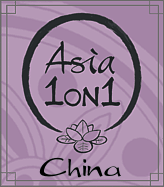|
|
|
|
The following list of books, DVDs, CDs, videos, newspapers, etc., are media that we can recommend to you if you are contemplating a visit to this country. We have tried to identify three books, including at least one guidebook, that we would most strongly recommend you read or at least browse before you go. If you have more time and interest you can get as deeply involved as you like. You may find some of these materials more relevant when you come back and want to get answers to questions that developed in-country. We also like to recommend various DVDs with films or documentaries that you should find educational. They will also give you a glimpse of the country before you actually arrive. Most of these items have a link to Amazon where you can purchase them if you like, but some materials are not available at Amazon (is that really possible?) and have links to other sites. We hope you find this list helpful.
|
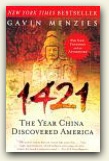
|
1421: The Year China Discovered America
By Galvin Menzies
Harper Perennial, 1st ed., 2004
On March 8, 1421, the largest fleet the world had ever seen set sail from China. Its mission was "to proceed all the way to the ends of the earth to collect tribute from the barbarians beyond the seas" and unite the whole world in Confucian harmony. When it returned in October 1423, the emperor had fallen, leaving China in political and economic chaos. The great ships were left to rot at their moorings and the records of their journeys were destroyed. Lost in China's long, self-imposed isolation that followed was the knowledge that Chinese ships had reached America seventy years before Columbus and had circumnavigated the globe a century before Magellan. Our knowledge of world exploration as it has been commonly accepted for centuries must now be reconceived due to this landmark work of historical investigation. Top
|

|
A Glimpse of Old China
By China Pictorial Publications
China Pictorial Publishing House, 1995
A Glimpse of Old China contains black-and-white photographs of all aspects of China from approximately 1900 to 1949. China's royal politics, military and foreign affairs, economics, trade, national costumes, religion, urban landmarks, landscapes, communications, natural disaster relief, culture, education, public health, and public figures are covered extensively. A significant photographic work. Top
|
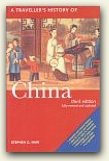
|
A Traveller's History of China
By Stephen G. Haw
Interlink Publishing Group, Inc., Brooklyn, NY, 2003
A Traveller's History of China provides a concise and fascinating jouney from the country's earliest beginnings right up to the creation of the economic powerhouse that is modern-day China. A comprehensive and illuminating look at the rich history of this dynamic country and an easy-to-use reference source. An ideal book to read before your trip. Top
|

|
China in Old Photographs 1860-1910
By Burton F. Beers
Dorset Press , 1981
This extraordinary collection of antique photographs provides a rare view of life in 19th Century China and a unique and revealing portrayal of Chinese culture. The photographs, most never before published, show the common people of China farming, fishing, spinning, peddling, and acting as beasts of burden, pulling heavily-loaded wheelbarrows or rickshas.
China in Old Photographs also shows the growing Western influence that would eventually dominate the country. Alongside pictures of a bride being carried in a sedan chair, lounging opium smokers, and a girl with bound feet, there are photographs of electric light poles along the narrow Shanghai streets, steamboats on the Yangtze River, and soldiers posing next to a Western-style cannon. An informative introduction and vivid descriptive captions make China in Old Photographs a treat for both the mind and the eye and a valuable contribution of immense historic interest. Top
|
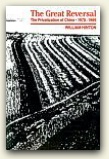
|
Great Reversal, The: The Privatization of China, 1978-1989
By William Hinton
Monthly Review Press, New York, NY, 1990
The Great Reversal is the first critical study of the widely-heralded reforms currently transforming China's economy. Hinton first examines the course of agricultural reform over the past decade, then looks at its consequences in different areas of the countryside and considers its implications for the country as a whole. He raises troubling questions about China's capitalist future--the growing landlessness, increasing inequality, and above all, the destruction of the nation's natural resources and the collectively built infrastructure that was the great achievement of the revolution. In so doing, he sheds new light on the sources of discontent behind the demonstrations that culminated in the Tienanmen massacre of June 1989. Top
|

|
Jews in China, The
By Pan Guang, Editor
China Intercontinental Press, China, 2001
This book tells of the history and life of Jews in various regions of China from the ancient times till after World War II. It contains images of Jews in Shanghai, Harbin, Tianjin, Shenyang, Manzhouli, Hailar, and Qingdao. It gives accounts of how Jews struggled and succeeded in Hong Kong, how Dr. He Fengshan, known as China’s Schindler, saved Jewish refugees, and of Jewish internationalists, such as Jacob Rosenfeld, Hans Muller, and Hans Shippe, who made great contributions to the liberation cause of the Chinese people. In addition, the album records visits of state leaders, and research into Chinese Jews conducted in various parts of the world. With over 200 black and white photos and maps. --Amazon.com
Top
|
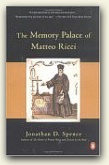
|
Memory Palace of Matteo Ricci, The
By Jonathan D. Spence
Penguin Books, 1985
A fascinating glimpse by an excellent writer and historian into 16th century Ming Dynasty China when Catholic priests were the primary interface between the Chinese empire and the West.
"Matteo Ricci (1552-1616), an Italian Jesuit, entered China in 1583 to spread Catholicism in the largely Confucian country. In order to make a persuasive argument for the educated Chinese to abandon their traditional faith for the new one he was carrying, Ricci realized that he would have to prove the general superiority of Western culture. He did so by teaching young Confucian scholars tricks to increase their memory skills--an important advantage in a nation with countless laws and rituals that had to be learned by heart. Ricci attracted numerous students with this method; more important, Ricci came to have a sympathetic understanding for China that he communicated to Rome, and thence to the European nations at large. Spence's portrait of Ricci is a gem of historical writing." --Gregory MacNamee
Top
|

|
Old China in Historic Photographs
By Ernst Boerschmann
Dover Publications Inc., New York, NY, 1982
Amidst the disorder and revolutionary energy of China in 1906, a German photographer named Ernst Boerschmann sought the eternal. For three years, while Manchu power decayed, he traveled across 12 provinces photographing his concept of "changeless" China: Buddhist monasteries, temples, sacred mountain groves, family graves, memorials, monuments, and the statuary and architecture of Chinese worship and reverence. Boerschemann's full-page, sharply reproduced blank-and-white photographs are grouped geographically and, while concentrating on religious sites and works of art, inevitably capture scenes of quotidian city and country life: a camel caravan, sedan chairs, waterwheel, boats and junks on rivers and harbors, the bamboo bridge at Guan xian, cramped alleyways and houses in Chongqing, and many monks, children and coolies. Top
|
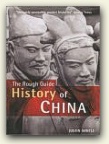
|
Rough Guide History of China, The
By Justin Wintle
Rough Guides, Ltd., London, U.K., 2002
Home to a quarter of the world's population, China is the rising super-power of the 21st century. The Rough Guide Chronicle summarizes the country's core history in accessible style and handy format, covering more than four thousand years from the earliest kingdoms to today's communist republic. Featuring a continuous time-line, sidebars on Confucius, the Terracotta Army, the invention of printing, Mao Zedong and a host of other topics, plus dozens of illustrations and quotations, The Rough Guide Chronicle is a vital reference for travelers and students alike. Top
|
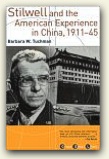
|
Stilwell and the American Experience in China, 1911-1945
By Barbara W. Tuchman
Grove Press, New York, N.Y., 1985
Joseph Stilwell, military attaché to China from 1935 to 1939, commander of U.S. forces, and Allied Chief of Staff to Chiang Kai-shek from 1942 to 1944, was a man who loved China deeply, spoke its language, and knew its people as few Americans ever have. Using the life of Stilwell, Barbara W. Tuchman explores the history of China from the Revolution of 1911 to the turmoil of World War II, when China's Nationalist government faced attack from both Japanese invaders and Communist insurgents. Her classic, Pulitzer Prize-winning biography of the cantankerous but level-headed "Vinegar Joe" is both an account of American relations with China and the experiences of one of our men on the ground. Top
|
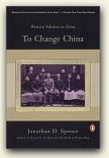
|
To Change China: Western Advisers in China 1620-1960
By Jonathan Spence
The Penguin Group, New York, NY, 1980
"To change China" was the goal of foreign missionaries, soldiers, doctors, teachers, engineers, and revolutionaries for more than three hundred years. But the Chinese, while eagerly accepting Western technical advice, clung steadfastly to their own religious and cultural traditions. As a new era of Sino-American relations begins, the tales in this volume will serve as cautionary histories for businessmen, diplomats, students, or any other foreigners who foolishly believe that they can transform this vast, enigmatic country. Top
|

|
Treason by the Book
By Spence, Jonathan D.
Penguin Books, Ltd., U.K., 2001
Shortly before noon on October 28, 1728, General Yue Zhongqi, governor-general of the provinces of Shaanxi and Sichuan, is surrounded by his retainers as he is being carried in his sedan chair back to his office in Xian. Suddenly, a strangely-dressed man runs toward him and tries to present him with a letter. General Yue orders the man to be seized. The letter is addressed to "The Commander in Chief Deputed by Heaven." When he gets to his office Yue tells his staff to leave him alone. He tears open the envelope and reads the first few lines. It is as he guessed and feared. The contents of the letter are undiluted treason. Treason by the Book investigates the attempted rebellion that "Summer Calm," the writer of the letter, was trying to persuade Yue Zhongqi to lead. Jonathan Spence, now regarded as the leading historian of China writing in English, has reconstructed the evidence in the case in a book of complete originality that has the pace and twists of a thriller. Top
|
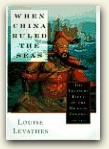
|
When China Ruled the Seas: The Treasure Fleet of the Dragon Throne, 1405-1433
By Louise Levathes
Oxford University Press, New York, N.Y., 1994
Levathes, a former staff writer for National Geographic, here tells the story of seven epic voyages made by unique junk armadas during the reign of the Chinese emperor Zhu Di. These "treasure ships" under the command of the eunuch admiral Zheng He traded in porcelain, silk, lacquerware and fine-art objects; they sailed from Korea and Japan throughout the Malay archipelago and India to East Africa, and possibly as far away as Australia. Levathes argues that China could have employed its navy--with some 3000 vessels, the largest in history until the present century--to establish a great colonial empire 100 years before the age of European exploration and expansion; instead, the Chinese abruptly dismantled their navy. Levathes describes the political showdown that led to this perverse turn of events, revolving around a clash between the powerful eunuch class and Confucian scholar-officials. Her scholarly study includes a section on the construction of the seagoing junks (the largest had nine masts, was 400 feet long and would have dwarfed Columbus's ships) and provides a look into court life in the Ming dynasty, particularly the relationship between the emperor, his eunuch and his concubines. --Reed Business Information, Inc., Copyright 1994, Publishers Weekly
Top
|
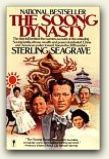
|
Soong Dynasty
By Sterling Seagrave
Perennial (Harper & Row Publishers, Inc.), New York, N.Y., 1986
An inside account of the Soong family, whose wealth and power have dominated China and United States-Asia policy in the 20th century. Top
|

|
Eldest Son: Zhou Enlai and the Making of Modern China, 1898-1976
By Han Suyin
Kodansha America, Inc., New York, N.Y., 1994
In Eldest Son, the first full-length biography of Zhou Enlai ever to be published in English, Dr. Han Suyin brings this awesome figure to life in a remarkably intimate portrait. Drawing on rare personal interviews with Zhou himself, meetings with his family and colleagues, and unprecedented access to Communist archives, Dr. Han presents a vivid sketch of this deeply-committed Chinese nationalist and his role in the evolution of modern China, from the founding of the Chinese Communist Party to the reestablishment of relations with the West. Top
|

|
Fanshen
By William Hinton
1966
A documentary of revolution in a Chinese village, this is an important book written by a sympathetic American who served with the YMCA in China. It documents the work of Communist land reform teams in the village of Long Bow in northern China in the years following the defeat of the Japanese, but before the Communist victory over the Nationalists in 1949. It tells of the struggle between the classes to achieve liberation or "fanshen." Top
|
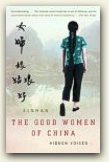
|
Good Women of China, The: Hidden Voices
By Xue Xinran
Anchor Books, 2003
When Deng Xiaoping's efforts to "open up" China took root in the late 1980s, Xinran recognized an invaluable opportunity. As an employee for the state radio system, she had long wanted to help improve the lives of Chinese women. But when she was given clearance to host a radio call-in show, she barely anticipated the enthusiasm it would generate. Operating within the constraints imposed by government censors, "Words on the Night Breeze" sparked a tremendous outpouring and the hours of tape on her answering machines were soon filled every night. Whether angry or muted, posing questions or simply relating experiences, these anonymous women bore witness to decades of civil strife and of halting attempts at self-understanding in a painfully restrictive society.
In this collection, by turns heartrending and inspiring, Xinran brings us the stories that affected her most and offers a graphically detailed, altogether unprecedented work of oral history. Top
|

|
China Alive in the Bitter Sea
By Fox Butterfield
Times Books, New York, N.Y., 1990
Actual stories of people's experiences during the Cultural Revolution, from farmers to factory workers and from educators to politicians. Winner of the American Book Award for general nonfiction, this book vividly portrays China and its people. Top
|

|
Turning Point in China: An Essay on the Cultural Revolution
By William Hinton
Monthly Review Press, New York, NY, 1972
Hinton makes clear his disagreement with popular Western interpretations of the Cultural Revolution of 1966-1969, which see it as a military takeover, a personal power struggle, or an effort to guarantee Mao Tse-tung's succession. Hinton postulates a real struggle for power between contending social interests and describes in detail the forces polarized in the two camps. Top
|

|
China Reader, The: The Reform Era
By Orville Schell & David Shambaugh
Vintage Books (Random House, Inc.), New York, N.Y., 1998
The China Reader: The Reform Era is a compilation by two astute China watchers of the most important documents, articles, and statements on China from 1972 to the present. Here are the voices of the experts, from Chinese analyses of the fall of Soviet Communism to Western exposes of an ecological crisis that threatens global weather patterns into the next millennium. Here, too, are the artifacts of an era, from regulations to control Chinese cyber-space to a Party member's Orwellian justification of the military crackdown in Tiananmen Square. The China Reader is a guide to understanding a nation in the throes of change--a historic moment with profound implications for policy makers and markets from the Pacific Rim to Wall Street. Top
|
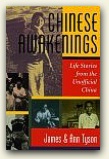
|
Chinese Awakenings: Life Stories from the Unofficial China
By James Tyson and Ann Tyson
Westview Press, Boulder CO, 1995
Chinese Awakenings contains penetrating accounts of individual Chinese who have "awakened" to the new possibilities in China today and are leading reforms from the bottom up. During their five years in China, the Tysons dodged government surveillance and sought out life stories throughout the country: in the yak-hair tents of Tibetan nomads, the cramped Shanghai garret of China's most courageous dissident, the seaside mansion of a multimillionaire, and the tiny sheet-metal workshop of a peasant migrant. They paint an intimate portrait of the feelings, aspirations, and workaday lives of ordinary Chinese. Top
|

|
Chinese Shadows
By Simon Leys
Penguin Books, New York, NY, 1978
Chinese Shadows takes us behind the shadow-play that is all most Westerners ever see of today's China. Scathingly critical of foreign journalists who whitewash the Cultural Revolution, Simon Leys depicts the People's Republic in shades both light and dark. Here are his own experiences of living as a foreigner in Peking, of taking the (heavily edited) grand tour through the great cities and the Maoist shrines, of coping with the multi-layered bureaucracy, and of meeting the admirable and oppressed Chinese people. Top
|

|
Gate of Heavenly Peace: The Chinese and their Revolution, 1895-1980
By Jonathan D. Spence
Viking Adult , 1982
The Gate of Heavenly Peace thoroughly documents the naivete of a prevailing idea during the conflict in Tiananmen. During the occupation of Tiananmen Square in 1989, some student leaders and their followers believed a simplistic formula: bloodshed would awake people; the awakened people would rise up; and democracy would somehow naturally result. But, as the whole world sadly witnessed, only bloodshed and casualties took place with no uprising whatsoever. The Gate of Heavenly Peace presents this fact metaphorically with blood stains on the stone pavement in Tiananmen Square, now tranquil after the crackdown. A movement led by young students had little chance of success, because its leaders didn't know what they wanted to accomplish and how. It eventually became a run-away train fueled by uncontrollable raw emotions and crashed into the stone wall of a cold-hearted, inflexible, and ruthless government. In hindsight, it was regrettable that some twenty-year old students, who lacked the knowledge of history, vision for the future, and wisdom of politics, were leading the movement and rejected most friendly, mature advice given them. However, their courage and conscience should be commended whilst examining and criticizing their mistakes. Spence looks back on the history of revolution in China to explain the present. Top
|
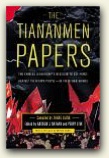
|
Tiananmen Papers, The
By Liang Zhang (Zhang Liang)
PublicAffairs (Perseus Books Group), New York, N.Y., 2002
Published to predictable international controversy, this sensational trove of documents, chronicling events leading up to, and following, the violent quashing of student protests in Tiananmen Square in June 1989, vividly details for the first time what previously had only been surmised. Zhang Liang, the pseudonym for the high-ranking Chinese official who leaked the documents, has revived the memory less to tell the truth than in a bid to advance political reform in China, which stalled as a result of Tiananmen Square. In that sense, the book is as much about hidden struggles now as it is about those in 1989. The Chinese government, unsurprisingly, has condemned it as "fabrication," and while a post-Hitler Diaries world is cautious, with experts admitting they cannot guarantee authenticity "with absolute authority," the feeling is that the records are largely credible.
What they reveal is the paranoia that gripped the Chinese rulers when the death of Hu Yaobang sparked public demonstrations that showed no signs of abating.... The gripping scenario that unfolds, in compulsive detail, is akin to parents bickering over the best way to control unruly children, with carrot or stick. ...The Tiananmen Papers affords a wide audience the opportunity to watch the drama unfold, blow by blow. It proves as brilliantly enthralling and explosive as a fictional thriller, allowing a rare snapshot of Chinese Communist Party factionalism in action. --David Vincent, Amazon.co.uk
Top
|
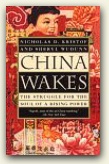
|
China Wakes: The Struggle for the Soul of a Rising Power
By Nicholas D. Kristof and Sheryl Wu-Dunn
Vintage Books (Random House, Inc.), New York, N.Y., 1995
"When China wakes, it will shake the world," Napoleon Bonaparte once remarked. That moment is now at hand. And in this book Nicholas D. Kristof and Sheryl WuDunn, the Pulitzer Prize-winning Beijing correspondents of The New York Times, bring to life the people, the politics, and the paradoxes of China as never before.
China Wakes combines groundbreaking reportage with the authors' personal account of how they came to discover the human stories within the world's most populous nation. Attracted by China's potential for greatness and repelled by its propensity for cruelty, Kristof and WuDunn struggle to reconcile their optimism about China's future with the brutality that always seems to break their hearts. WuDunn takes us along as she slips into a China usually hidden from foreigners, a China of cabinet ministers making unwanted advances on local women and of peasants who cannot afford pants for their children. We also accompany Kristof as he witnesses Chinese troops massacring protesters at Tiananmen Square and as he later comes face to face with the man who betrayed the leaders of the democracy movement to the police.
With the Chinese economy (the world's third largest) on a trajectory to overtake Japan and the United States in the coming decades, Kristof and WuDunn describe a spectacular economic boom that has enabled a twenty-three-year old to start his own airline or a manual laborer to become a millionaire furniture manufacturer. But they also reveal the chilling paradox lurking beneath these rags-to-riches stories.
Top
|
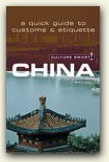
|
Culture Smart! China
By Kathy Flower
Graphic Arts Center Publishing Company, Portland, OR, 2003
Culture Smart! China offers illuminating insights into Chinese culture and society. It will help you to turn your visit--whether for pleasure or on business--into a memorable and enriching experience.
Contents include: how to avoid culture shock; Chinese attitudes and values; historical and political background; religion, customs, and traditions; the Chinese at home; leisure, social, and cultural life; dos, don'ts, and taboos; body language; hospitality, food, and drink; giving and receiving gifts; business briefing; and language communication. Top
|

|
Last Generation of Lily-Footed Women in China, The
By Li Nan
798 Photogallery, 2005
A fascinating, artistic, photographic portrayal of the lives of Chinese women who practiced the self-mutilating custom of foot-binding that began some 1000 years ago during the Five Dynasties Period and continued until the mid-20th century. When these black-and-white photographs were first published in 1993, they won the Silver Metal Award of the Chinese National Press Photography. This small, 76-page book is beautifully compiled and includes interesting text on the Golden Lily Culture, the origin of foot-binding, and the reasons underlying its practice. Visit http://www.linanphoto.com. Top
|
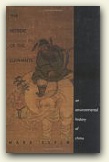
|
Retreat of the Elephants: An Environmental History of China, The
By Mark Elvin
Yale University Press, New Haven, Conn. , 2004
This is the first environmental history of China during the three thousand years for which there are written records. It is also a treasure trove of literary, political, aesthetic, scientific, and religious sources, which allow the reader direct access to the views and feelings of the Chinese people toward their environment and their landscape. Mark Elvin chronicles the spread of the Chinese style of farming that eliminated the habitat of the elephants that populated the country alongside much of its original wildlife; the destruction of most of the forests; the impact of war on the environmental transformation of the landscape; and the re-engineering of the countryside through water-control systems, some of gigantic size. He documents the histories of three contrasting localities within China to show how ecological dynamics defined the lives of the inhabitants. And he shows that China in the eighteenth century, on the eve of the modern era, was probably more environmentally degraded than northwestern Europe around this time. Indispensable for its new perspective on long-term Chinese history and its explanation of the roots of China's present-day environmental crisis, this book opens a door into the Chinese past. Top
|

|
River Runs Black: The Environmental Challenge to China's Future, The
By Elizabeth Economy
Cornell University Press, Ithaca, N.Y., 2005
Drawing on historical research, case studies, and interviews with officials, scholars, and activists in China, Elizabeth Economy traces the economic and political roots of China's environmental challenge and the evolution of the leadership's response. She argues that China's current approach to environmental protection mirrors the one embraced for economic development: devolving authority to local officials; opening the door to private actors; and inviting participation from the international community, while retaining only weak central control. The result has been a patchwork of environmental protection in which a few wealthy regions with strong leaders and international ties improve their local environments, while most of the country continues to deteriorate, sometimes suffering irrevocable damage. Economy examines the growing role of nongovernmental actors in protecting the environment and expanding the boundaries of political action, and sketches out several possible futures for the country. Top
|

|
Shanghai: A Century of Change in Photographs 1843-1949
By Lynn Pan, Xue Liyong, et al.
Hai Feng Publishing Co., Hong Kong, 1997
One hundred and fifty years ago, in 1843, the great city of Shanghai was opened up as a treaty port. Indeed, for a hundred years, from 1843 to 1943, it was the supreme examplar of that historical genre. Like Hong Kong, that other great port on the China coast, the Shanghai portrayed in these pages...represented the first door opened into China by British mercantile interests and power.
A door is a meeting point, a place of encounter--in this case all kinds of encounter, between peoples and cultures, between stages of civilization, between ways of thought and ways of life. During the hundred-odd years spanned by the photographs in this book, Shanghai was an arena for encounters more varied and vivid than those experienced by any other city in the Far East. --Shanghai: A Century of Change in Photographs 1843-1949 (Oversized, includes approximately two hundred black and white photos.) Top
|
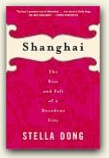
|
Shanghai: The Rise and Fall of a Decadent City
By Stella Dong
HarperCollins Publishers, Inc., New York, N.Y., 2000
On the eve of the 20th century, few places were as exciting as Shanghai. Once a wilderness of swamps, Asia's "Sin City" evolved into a dazzling modern-day Babylon: redolent with the sickly sweet smell of opium; teeming with illicit sex, crime, and poverty; and rife with corruption and glamorous wealth. In this vibrant history, Stella Dong follows the rise and fall of the city's booming international port, gateway to China's heartland. In intricate, colorful detail, she examines the misdeeds of its criminal underworld, the passions of its citizens' decadent appetites, and the revolutionary spirit of its many political refugees. Best of all, she captures the essence of the city as if it were a person who had lived a fascinating and tumultuous life. Top
|
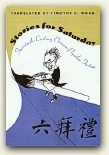
|
Stories for Saturday: Twentieth-Century Chinese Popular Fiction
By Timothy C. Wong, Translator
University of Hawai'i Press, Honolulu, 2003
In the first half of the twentieth century, urban Chinese regularly lost themselves in tales of scandalous affairs, tender romances, and splendid acts of martial gallantry--standard reading fare on Saturdays among city dwellers craving entertainment and escape. Openly disdained by many intellectuals for their frothy content and maudlin appeal, these tales have been largely ignored in histories and anthologies of modern Chinese fiction both in China and the West. Recently, however, increasing attention has been paid to this fiction and its place in the vibrant tradition of Chinese writing during a period of rapid cultural change.
The stories selected and translated here invited Chinese readers to enter worlds at once connected to and removed from their familiar surroundings. Today, the stories have become a record of what urban life was actually like, as well as what readers then wished it to be.
Top
|
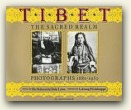
|
Tibet: The Sacred Realm: Photographs 1880-1950
By Michael E. Hoffman, Editor-Publisher
Aperture, Inc., USA , 1983
Tibet: The Sacred Realm is a compilation of fascinating black and white historical photographs from the archives of the Academy of Natural Sciences, Philadelphia. "Whatever the fate of Tibet, the spiritual essence of the Sacred Realm remains in the hearts of the Tibetan people. Our cultural heritage lives, too, in the handful of photographs taken in our country before 1950, all the more precious because they preserve a sense of time and place that now exists only in our memories." --Lobsang P. Lhalungpa
Top
|

|
Youtai Ren Zai Shanghai: The Jews in Shanghai
By Pan Guang, Editor
Shanghai Pictorial Publishing House, China, 2001
The Jews in Shanghai is an historically significant, oversized collection of black and white photos of Jewish life in Shanghai throughout the 20th century. "When all the civilized world closed its door to Jewish refugees, Shanghai provided a vital haven and every possible relief for them.... What is especially worth mentioning is the mutual respect, sympathy, and support between Shanghai Jews and Chinese people. In history, both the Chinese and the Jewish nations contributed so much to the civilization of the world. And Chinese people experienced untold sufferings as Jewish people did. Over 35 million Chinese were killed and wounded by Japanese fascists during wartime. The same experience gave Chinese people deep respect and sympathy for Jewish people." --Youtai Ren Zai Shanghai: The Jews in Shanghai Top
|
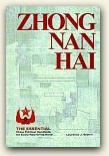
|
Zhong Nan Hai
By Laurence J. Brahm
Naga, Hong Kong, 1998
Zhong Nan Hai provides the most comprehensive compendium of information about the government offices under the State Council, the new line-up of ministries, and the bureaus, as well as insightful background into each of the key personalities in today's China.
--Amazon.com
Top
|
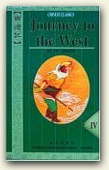
|
Journey to the West
By Wu Ch'eng-En
Foreign Languages Press , 2003
The story of the Monkey King is the best known and most beloved of China's great classical novels. Entertaining and imaginative, it recounts the adventures of the monk, Xuanzang, while traveling to India in search of Buddhist scriptures. Probably the most popular book in the history of the Far East, this classic combination of picaresque novel and folk epic mixes satire, allegory, and history into a rollicking tale. It is the story of the roguish Monkey and his encounters with major and minor spirits, gods, demigods, demons, ogres, monsters, and fairies. Top
|
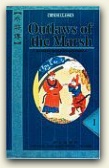
|
Outlaws of the Marsh
By Shi Nai'an
Foreign Languages Press, 2001
A great classic of Chinese literature, also known as Water Margin and All Men are Brothers, Outlaws of the Marsh provides an exciting account of the adventures of a bold brigand army--similar to Robin Hood and his merry men--battling against tyrannical rulers. Top
|

|
Story of the Stone (The Dream of the Red Chamber), The
By Hsueh-Chin Hsao
Indiana University Press, Bloomington, Ind., 1979
For more than a century and a half The Story of the Stone, also known by the title The Dream of the Red Chamber, has been recognized in China as the greatest of its novels--a Chinese Romeo-and-Juliet love story and a portrait of one of the world's great civilizations. Divided into five volumes, it charts the glory and decline of the illustrious Jia Family (a story which closely corresponds to the fortunes of the author's own family). The two main characters, Bao-yu and Dai-yu, are set against a rich tapestry of humor, realistic detail, and delicate poetry which accurately reflect the ritualized hurly-burly of Chinese family life. But superimposed over the novel from beginning to end is the constant reminder that there is another plane of existence--a theme which affirms the Buddhist belief in a supernatural scheme of things. Top
|
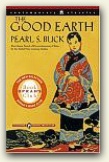
|
Good Earth, The
By Pearl Buck
Washington Square Press , 2004
Wang Lung, rising from humble Chinese farmer to wealthy landowner, gloried in the soil he worked. He placed it above his family, even above his gods. But soon, between Wang Lung and the kindly soil that sustained him, came flood and drought, pestilence and revolution. Through this one Chinese peasant and his children, Nobel Prize-winner Pearl S. Buck traces the whole cycle of life--its terrors, its passions, its persistent ambitions, and its rewards. Her brilliant novel, beloved by millions of readers throughout the world, is a universal tale of the destiny of men. Top
|

|
A Many Splendored Thing
By Suyin Han (a.k.a. Han Suyin)
1952
Autobiographical novel about a female Eurasian doctor and her romance with an American news correspondent in racially-segregated Hong Kong. Top
|
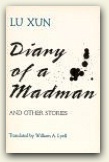
|
Diary of a Madman and Other Stories
By Xun Lu (a.k.a. Lu Xun)
University of Hawai'i Press, Honolulu, Hawaii, 1920
In this book by Lu Xun, one of the greatest Chinese fiction writers in history, influences from Russian writers such as Gogol, Dostoevsky, and Tolstoy abound, yet Lu Xun manages to convey a distinctively Chinese atmosphere through his vivid descriptions of the things he observes in China. Comparing it to Gogol's Diary of a Madman, Lu Xun explores reality in an entirely different manner, yet still cuts open a side of humanity for raw perusal. The ineffable presence of China is tangible in Xun's stories, unlike the writing of many Chinese American authors, permitting the reader to relate to the mental pain and suffering of Xun's characters through evocative, masterful language. Top
|

|
Legacies: A Chinese Mosaic
By Bette Bao Lord
Ballantine Books, New York, N.Y., 1991
Legacies was written by Bette Bao Lord--born in China, raised in America, author of the bestselling novel Spring Moon, wife of a former American ambassador to China, and resident in Beijing during the "China Spring" of 1989. Lord's unique web of relationships and her sensitive insight have enabled her to observe Chinese life, both high and low, Communist and dissident, and intellectual and ordinary.
Lord interweaves her own story, and that of her clansmen, with the voices of men and women who recall the tumultuous experience of the last fifty years and the legacy of the Cultural Revolution. In precise, subtle prose, Lord explores the reality of Red Guards and reeducation camps--of friends and families severed by political disgrace--and captures the individual voices of those caught up in them: the seven-year-old girl with a heart full of hate for her father; the journalist whose girlfriend believes the Party newspapers, not him; the imprisoned scholar who hid his writings in his quilt for years; and the anti-revolutionary who tells his bitter story in a vein of high farce. All bear heartbreaking witness to the surreal quality of Chinese society today and to the astonishing resilience, humor, and heroic equanimity of the Chinese spirit.
Top
|
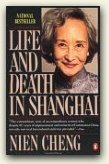
|
Life and Death in Shanghai
By Nien Cheng
Penguin Books USA, Inc., New York, N.Y., 1988
This gripping account of a woman caught up in the maelstrom of China's Cultural Revolution begins quietly. In 1966, only the merest rumblings of political upheaval disturbed the gracious life of the author, widow of the manager of Shell Petroleum in China. As the rumblings fast became a cataclysm, Cheng found herself a target of the revolution. Red Guards looted her home, literally grinding underfoot her antique porcelain and jade treasures, and she was summarily imprisoned, having been falsely accused of espionage. Despite harsh privation, even torture, she refused to confess and was kept in solitary confinement for over six years, suffering deteriorating health and mounting anxiety about the fate of her only child, Meiping. When the political climate softened and she was released, Cheng learned that her fears were justified: Meiping had been beaten to death when she refused to denounce her mother. The candor and intimacy of this affecting memoir make it addictive reading. Its intelligence, passion, and insight assure its place among the distinguished voices of our age, proclaiming the ascendancy of the human spirit over tyranny. BOMC main selection. Copyright 1987 Reed Business Information, Inc. Top
|

|
Living & Working Abroad in Shanghai
By Rebecca Weiner, Angie Eagan, and Xu Jun
Times Books International, Singapore, 2003
How do you describe a mega-metropolis so famous its name is a verb? Shanghai is one of the world's largest and fastest-growing cities. It is a seaport, river-port, and major commerical and cultural entrepot. It is also a birthplace of the revolution that led to modern China and the engines of China's ongoing growth. The feeling of Shanghai life is tougher to capture. For some it's the hustle-bustle excitement (or annoyance) of living in a perpetual construction zone. For others, Shanghai life is a cultural and social whirl. Authors Weiner, Eagan, and Jun invite you on an in-depth tour of China's most exciting city, exploring Shanghai's glamorous and tragic history, its unique and enterprising people, and its amazing resurgence as a world-class cosmopolitan city. Visit http://www.timesone.com.sg/te Top
|
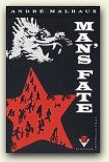
|
Man's Fate (La Condition Humaine)
By Andre Malraux
Vintage Books (Random House, Inc.), New York, N.Y., 1990
Man's Fate was first published in 1933. A fictional account of the early days of the Chinese Revolution, this novel remains a powerful expression of psychological insight into the spirit of political revolution. From the opening scene in which Chinese terrorist Ch'en Ta Erh struggles internally over his task of assassinating a sleeping man, Malraux combines gritty action with an elaboration of the existential principle that social change is powered by the actions of individuals. Top
|
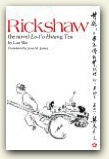
|
Rickshaw: The Novel Lo-t'o Hsiang Tzu
By Lao She
University of Hawai'i Press, Honolulu, Hawaii, 1979
Rickshaw, also known as Lo Tuo Xiang Zi, is considered a classic in the world of modern Chinese literature. Written in 1936, the novel is set in Beijing. It is not simply a story about rickshaw pullers, but a story about the social miseries in early modern China. Lao She's work depicts the ugliness and cold-heartedness of the time, describing the world of Xiang Zi in vivid detail--the dust, the rain, the heat, the cold, the hearts of people, and the harrowing streets of Peking. Lao She voices his hatred of individualism and left wing ideas in the final lines of the novel, but his eyes remain fixed on Xiang Zi throughout the novel--and Xiang Zi's attention is always on the rickshaw. --John Chak, Vancouver, B.C. Top
|
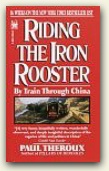
|
Riding the Iron Rooster: By Train Through China
By Paul Theroux
Ballantine Books (Random House, Inc.), New York, N.Y., 1989
Theroux spent a year exploring China by train, and his impressions about what has and has not changed in the country, as gathered in hundreds of conversations with Chinese citizens, make up a large portion of the book. The Cultural Revolution and the vandalism of the Red Guards have left scars on both the land and the people. Mao's death brought a collective sigh of relief from the population; reforms brought about under Deng Xiaoping have generally been welcomed. Still, this is not a political book. Whether describing his dealings with a rock-hard bureaucracy, musing over the Chinese flirtation with capitalism (they've "turned the free market into a flea market") or commenting on the process of traveling, Theroux conducts the reader through this enormous country with wisdom, humor and a crusty warmth. Along the way are anecdotes about classic Chinese pornography (forbidden to the citizenry, but all right for "foreign friends"); 35-below-zero weather; the Chinese penchant for restructuring nature; and the omnipresent thermos of hot water for making tea. The last chapter, "The Train to Tibet," deals with the extremes to which the Chinese have gone in their attempts to subjugate the Tibetan people. Theroux develops an understanding of China through his travels, but he falls in love with Tibet. As in his previous works, he gives the reader much to relish and think about." --Reed Business Information, Inc., Copyright 1988, BOMC featured selection. Top
|
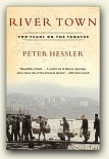
|
River Town: Two Years on the Yangtze
By Peter Hessler
Perennial (HarperCollin Publishers, Inc.), New York, N.Y., 2002
When Peter Hessler joined the Peace Corps, he expected to spend a couple of peaceful years teaching English in the town of Fuling along the Yangtze River. But what he experienced--the natural beauty, cultural tension, and complex process of understanding that takes place when one is thrust into a radically different society--surpassed anything he could have imagined. Hessler observes firsthand how major events like the death of Deng Xiaoping, the return of Hong Kong to the mainland, and the controversial construction of the Three Gorges Dam have sent tremors large enough to sweep through China and reach the people of Fuling. Poignant, thoughtful, and utterly compelling, River Town is an unforgettable portrait of a city caught mid-river in time, much like China itself; a country seeking to understand both what it was and what it someday will be. Top
|
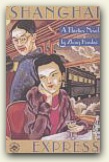
|
Shanghai Express
By Zhang Henshui
University of Hawai'i Press, Honolulu, Hawaii, 1997
In this suspenseful tale of seduction and deception, a wealthy banker is smitten by an alluring young woman while traveling aboard the express train from Beijing to Shanghai. A consummate storyteller and one of the most popular novelists of his day, Zhang Henshui sweeps us on board with them and takes us through train stations and back and forth between first-, second-, and third-class cars, evoking the smells of this microcosm of the urban world. We see what various travelers wear; we hear their conversations; we feel the chill or the warmth of each car; we detect a trace of perfume in one, pickled vegetables and greasy meats in another. Here is popular Chinese fiction at its best. Top
|
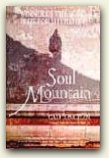
|
Soul Mountain
By Gao Xingjian
Harper Perennial, London, U.K., 2004
A bold, lyrical, prodigious novel, Soul Mountain probes the human soul with an uncommon directness and candor. Interwoven with the myriad of stories and countless memorable characters--from venerable Daosit masters and Buddhist nuns to mythical Wild Men, deadly Qichun snakes, and farting buses--is the narrator's poignant inner journey and search for freedom.
Fleeing the social conformity required by the Communist government, he wanders deep into the regions of the Qiang, Miago, and Yi peoples located on the fringes of Han Chinese civilization and discovers a plethora of different traditions, history, legends, folk songs, and landscapes....
Storytelling saves the narrator from a deep loneliness that is part of the human condition. His search for meaning--in life, in the journey--turns up the possibility that there may be no meaning. The elusive Lingshan ("Soul Mountain"), which becomes the object of his quest, never yields up its secrets, but the journey is a rich, strange, provocative, and rewarding one. Soul Mountain is a novel of immense wisdom and profound beauty. --Amazon.com
Top
|
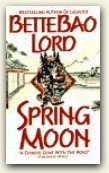
|
Spring Moon
By Bette Bao Lord
HarperTorch (HarperCollins Publishers), New York, N.Y., 2001
Five generations of a Mandarin family--from war-torn 19th century China to the present--are revealed through the adventures of Spring Moon, who experiences a long life of trouble, sacrifice, and joy. Top
|
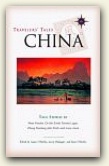
|
Travelers' Tales China: True Stories
By Sean O'Reilly, et al., editors
Travelers' Tales, San Francisco, Calif., 2004
Travelers' Tales China brings travelers--armchair or actual--a breadth and depth of experience from both new and well-known authors that will help make the China experience unforgettable and transforming. These pages cover 6,000 years of history up to modern-day socialist China, from the Silk Road to the high-tech center of Beijing. Explore the old as well as the new
--from the tombs of dead emperors to the world's largest dam. The vastness of the Gobi Desert, the darkness of the assault on Nanking, the upheavals of the Cultural Revolution, and the 700 nature preserves in a country that boasts more wildlife than any other in the world--these are just a few of the subjects in this literate, lively book. --Amazon.com
Top
|
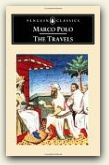
|
Travels of Marco Polo, The
By Marco Polo (Ronald Latham, Translator)
Penguin Books, Ltd., U.K., 1958
This is Marco Polo's epic story of his great adventures in the empire of the Mongols, chosen as one of the ten best adventure books of all time by National Geographic Adventure. Chronicling the thirteenth-century world from Venice, his birthplace, to the far reaches of Asia, Marco Polo tells of the foreign peoples he meets as he travels by foot, horse, and boat through places including Persia, the land of the Tartars, Tibet, India, and, most important, China. There he stays at the court of Kublai Khan, venturing to the capital of Beijing and to Shangtu, made immortal in Coleridge's poem "Xanadu." This is a gripping look at a legendary place and time.
Top
|
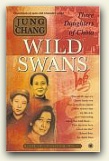
|
Wild Swans: Three Daughters of China
By Jung Chang
Touchstone, New York, N.Y., 2003
Blending the intimacy of memoir and the panoramic sweep of eyewitness history, Wild Swans has become a bestselling classic in thirty languages, with more than ten million copies sold. The story of three generations in twentieth-century China, it is an engrossing record of Mao's impact on China, an unusual window on the female experience in the modern world, and an inspiring tale of courage and love. Jung Chang describes the life of her grandmother, a warlord's concubine; her mother's struggles as a young idealistic Communist; and her parents' experience as members of the Communist elite and their ordeal during the Cultural Revolution. Chang was a Red Guard briefly at the age of fourteen, then worked as a peasant, a "barefoot doctor," a steelworker, and an electrician. As the story of each generation unfolds, Chang captures in gripping, moving--and ultimately uplifting--detail the cycles of violent drama visited on her own family and millions of others caught in the whirlwind of history. Top
|
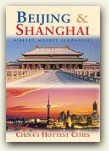
|
Beijing and Shanghai
By Peter Hibbard, Paul Mooney, et al.
Oddysey Publications, Ltd., Hong Kong, 2006
China's drive into the 21st century has been fueled by the relationship—and competition—between Beijing, considered by some observers to be the capital of capitals in China, and Shanghai, the nation's economic growth engine. As Beijing bounds forward to host the 2008 Olympics, its majesty, well reflected in its cultural gems—the Forbidden City, The Temple of Heaven and the Ming Tombs—remains unfettered by the country's economic development.
Beijing & Shanghai brings readers up-to-date on what's hot and what's cool in China's twin cities. Combining the latest information about restoration, entertainment, transportation, and accommodation with historical writing, Beijing & Shanghai is the sophisticated guide to urban China that travelers have always wanted. 230 color photos and 17 maps are included.--Amazon.com
Top
|

|
Beijingwalks
By Don J. Cohn and Zhang Jingqing
Henry Holt and Company, Inc., New York, N.Y., 1992
The city of Beijing is as old as Chinese civilization itself. Ever since Marco Polo reported back on the splendor and excitement he discovered there, it has captured the Western imagination as no other ancient city has.
Beijingwalks presents six intimate walking tours of the most historic quarters of this politically and culturally complex city. Included are Tiananmen Square and the Forbidden City, the Temple of Heaven, the Summer Palace, and many more fascinating sights, all placed in their imperial contexts and brought alive through traditional drawings, maps, and photographs. Throughout, little-known details are offered on everything from Chinese architecture to Fengshuii geomancy to the ancient antiques trade, with quotes from period texts to evoke the flavor of Old Peking. Included are general travel advice and information; maps; more than thirty-five black-and-white photographs; line drawings; a select list of restaurants, shops and hotels; and a full index. Top
|

|
China--Insight Guides
By Insight Guides
Langenscheidt Publishers, Inc., Maspeth, N.Y., 1998
China, the most populous country in the world, with borders that stretch for more than 12,000 miles, boasts numerous scenic wonders, including serene lakes and awe-inspiring architecture. China--Insight Guides travels to some of the highest mountains and deepest valleys in the world. Experience China's great, ancient culture, displayed in countless pagodas, temples, palaces, unique tombs, and works of art. Meet a people whose history has spanned thousands of years. Admire the detailed arts and crafts based upon mythical characters as well as actual history. Savour the exotic varieties of Chinese cuisine, learn the intricacies of Chinese medicine, and be amazed by the quigong artists. There are more than 400 pages of text, enriched with excellent photos, that capture the history, culture, and politics of the country, while providing practical information about traveling to China. Top
|
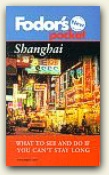
|
Fodor's Pocket Shanghai
By Nancy van Itallie, Editor
Fodor's Travel Publications, Inc., New York, NY, 1998
A great guide to Shanghai, packed with essentials: walking tours along the Bund, in the old French Concession, and in the former Jewish quarter; important Buddhist temples, world-class art museums; river cruises, garden walks, and tai chi in the parks; golf courses, gyms, tennis courts, and swimming pools; sizzling nightlife, from Chinese opera and Shanghai acrobats to nightclubs and karaoke; great shopping in antiques markets, street bazaars, department stores, and arts and crafts emporiums; where to stay no matter what your budget, including modern high-rises, traditional guest houses, and historic Art Deco masterpieces; the top hotel restaurants, dining rooms with views, cafes, and traditional Chinese mahogany-and-marble salons. Top
|
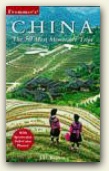
|
Frommer's China: The 50 Most Memorable Trips
By J. D. Brown
Macmillan, Inc., New York, NY, 1998
China expert J. D. Brown embarks on the journey of a lifetime, highlighting the "Middle Kingdom"--from the Great Wall to the Great Buddha. Adventures include: exploring China's fabled cities, from the ancient capitals of Beijing and Xi'an to the modern metropolises of Shanghai and Chongqing; sightseeing at the most unforgettable sites, from the Forbidden City to the Tomb of the Terra-Cotta Warriors; outdoor adventures, from hiking the sacred mountains to exploring the Buddhist caves of Mogao and Longmen; traversing the legendary Silk Road; cruises on the Yangzi and Li Rivers; encounters with pandas and tigers, and much more. Also included are: personal, first-hand descriptions with all the practical details needed for planning your own trip; tips for navigating China's languages, culture, cuisine, and customs; the best places to stay and dine throughout the country; and detailed, acccurate city and regional maps. Chinese characters are provided for all the major sights. Top
|

|
Lonely Planet China (Travel Survival Kit)
By Robert Storey, Chris Taylor, et al.
Lonely Planet Publications Pty. Ltd., Australia, 2002
From the splendor of the Great Wall to punk rock in Beijing, travelers find plenty to marvel at in China. This book goes beyond the tourist trail--to the deserts of Xinjiang and the grasslands of Inner Mongolia, the gorges of the Yangzi and the hill tribe villages around Kunming. Everything you need to know about food, including regional specialities, is included, as are tips on how to get around independently--by train, bus, boat, and bicycle. Whether you're eating traditional hotpot in Sichuan or discoing in Shanghai, this guide is full of practical advice on a changing destination. It contains 201 maps, Chinese script and pinyin, plus a language section. Top
|
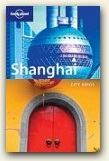
|
Lonely Planet Shanghai
By Bradley Mayhew
Lonely Planet Publications Pty. Ltd., Oakland, CA, 2004
In the space of a decade, Shanghai has re-emerged as one of the world's great cities. Highrollers, trendsetters, and travelers alike are drawn to this dynamic and cosmopolitan metropolis. Shop, promenade, explore by day, and hit chic bars and world-class restaurants at night--you'll be amazed by the plethora of choices. This smart, streetwise, and stylish guide will ensure you get the most out of "new" Shanghai: eat with confidence in the most authentic restaurants with the Chinese menu decoder; shop like mad at markets and malls, boutiques and bazaars--they're sure to have something in your size; walk through time using the walking tours featuring the Bund, the French Concession, and the Old Town; get out of town with excursions to Zhouzhuang, Suzhou, and Hangzhou; and never get lost using the detailed color maps. Top
|
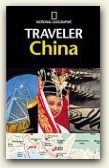
|
National Geographic Traveler: China
By Damian Harper
National Geographic Society, Washington, D.C., 2004
In-depth sight descriptions and background information, plus insightful features on history, culture, and contemporary life distinguish this sumptous guidebook. Included in its user-friendly format are more than 280 vivid color photographs; 31 detailed, full-color maps; mapped walking, biking, and river tours; specially commissioned artwork; and complete visitor information on hotels, restaurants, shopping, entertainment, and festivals. Top
|
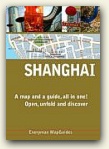
|
Shanghai: Everyman CityMap Guides
By Matthew Clarke, Translator
Alfred A. Knopf, New York, N.Y., 2004
Explore Shanghai map-in-hand. The Everyman CityMap is a guide for all taste and all budgets, containing detailed, color, fold-out maps; a selection of 60 sites not to be missed; and details of more than 100 restaurants, bars, pubs, theatres, music venues, shops, markets, hotels... plus all the practical advice needed for an exciting and memorable trip. A guidebook and map book, all in one. Top
|
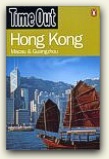
|
Time Out: Hong Kong (Time Out Guides)
By Lesley McCave, Editor
Penguin Group, U.K., 2004
Vibrant, exciting, and often overwhelming, Hong Kong offers a huge range of attractions, both urban and rural. In Time Out: Hong Kong a team of local writers highlights the best of the territory and its environs, taking in the former Portuguese enclave of Macau and the booming modern city of Guangzhou.
Time Out: Hong Kong includes chapters on restaurants, cafes, clubs, and bars--what's hot and what's not; where to blow your dough--a comprehensive selection of Hong Kong's best malls, shops, and markets; a walk on the wild side--escape the frenzy of the city by hiking, climbing, or running in the territory's under-explored country parks; modern architecture--the buildings that make up Hong Kong Island's world-famous skyline are rated and slated; and understanding local customs and culture--from feng shui to t'ai chi ...all with full details of opening times, prices, and transport. An essential travel guide. Top
|
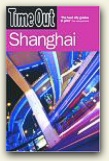
|
Time Out: Shanghai (Time Out Guides)
By Andrew Humphreys, Editor
Time Out Guides, Ltd. , 2004
Shanghai is rapidly becoming the economic and cultural powerhouse not just of China, but also of all Asia. Recognized as the world's fastest growing city, it's a place where skyscrapers sprout weekly and where doing something "immediately" is considered sluggish. Boundless energy, technological advancement, and cash, cash, cash make Shanghai buzz like perhaps no other city in the world. The first edition of this Time Out guide is written by a team of resident experts and local journalists who have scoured Shanghai from the early morning farmers' market at Xiangyang to the clubs of Guandii at dawn in order to present the complete picture of this city in flux. The guide offers tips on cultural etiquette, expert recommendations of the best places to stay for every budget, and a complete guide to cuisine, including how to tell Cantonese from Chaozhou, and Shaoxing from Yangzhou. [Also included are the pick of the shopping scene, whether you're after cut-price designer labels or Mao memorabilia. Hinterland canal towns and mist-shrouded islands are featured as well.] --Amazon.com Top
|
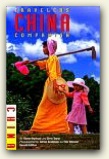
|
Traveler's China Companion
By Derek Maitland and Chris Taylor
The Globe Pequot Press, Guilford, CT, 2001
Whether you are dreaming from an armchair or booking your flight, this Traveler's Companion guide delivers in-depth information and guidance for exploring China, including: inside information about the easiest way to travel, the best restaurants, and the perfect places to stay; lavish color photography that takes you to your destination while you are still planning; the best choices to make in advance, so you spend precious vacation time discovering the wonders of your destination, not being disappointed by lackluster sights; and clearly structured entries on travel specifics, allowing you to spend less time with your nose in your guidebook and more time enjoying your destination. Top
|
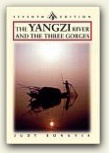
|
Yangzi River: The Yangtze and The Three Gorges
By Judy Bonavia, Richard Hayman, et al.
Odyssey Publications, Ltd., Hong Kong, 2004
Nearly 4,000 miles long, the Yangtze or "Long River" is China's main artery, supporting a third of its people. This detailed guide to the river and its environs includes practical information on sights and accommodation as well as a selection of literary excerpts to enrich the reader's unerstanding of China's major commercial waterway. Top
|
|
|
|
|
|
